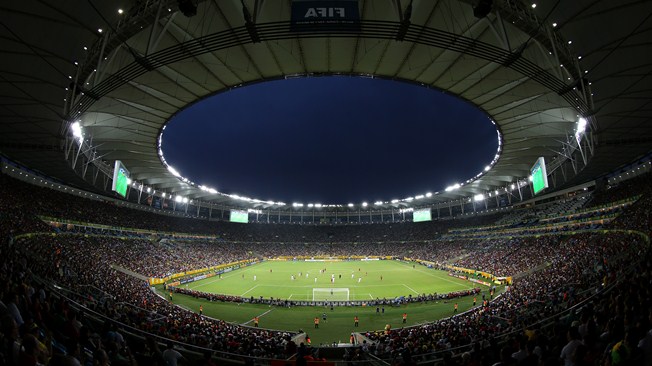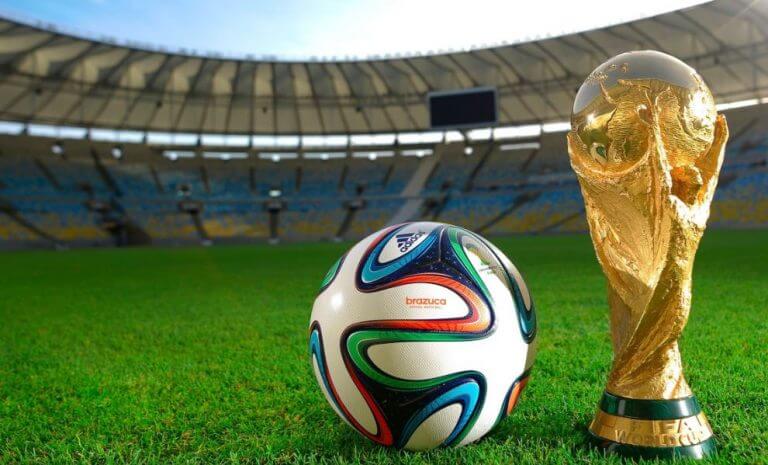FIFA: The Entity on the Cusp of World Soccer

Because of its size, FIFA (Fédération Internationale de Football Association) is possibly the most famous sports association in the world. Specifically, it’s the main institution that regulates the practice of soccer on an international level. It groups together national federations or associations from all around the world.
Currently, its most recognized role is the organization of major international events, such as the Soccer World Cup. It also organizes other world championships in their different categories and modalities. Likewise, it’s responsible for organizing the Olympic Games regarding this sport, along with the International Olympic Committee (IOC).
The size of this organization has expanded so much and so quickly that it’s difficult to think about professional soccer apart from FIFA’s regulations and rules. However, the history of soccer begins many years before the creation of this entity; although its constitution has been one of the key aspects for the professionalization of this sport.
The origins of soccer
The origins of soccer are full of mysticism and imprecision. To date, it’s not really known when soccer was born; although it would become the most popular and projected sport in the world. At what point did it all start?
On the one hand, we know that there were numerous games that involved balls in different ancient civilizations. There are even records that ancient cultures in the Mediterranean basin and indigenous people in America would carry out this type of activity.

However, the most trustworthy record found to this day, dates back to Ancient Greece, around 400 B.C. The sport known as episkyros used a leather ball and required teams of 12 to 14 players.
The evidence for this new sport was so consistent that it led FIFA itself to recognize it as one of the oldest forms of soccer. Soon after, it would have a new version in Ancient Rome: the harpastum.
However, it was at the end of the Middle Ages and in the British Isles that the games which followed actual soccer codes originated. Gradually, people started to unify these codes. In the mid 17th century, the first processes of soccer unification began to take place; this would only end in the 19th century.
These codes gave birth to not only modern soccer, but also to rugby and American football. But, specifically in soccer, we can see two key modifications: the prohibition of manipulating the ball with the hands, and the prohibition of rough physical contact to recover the ball from the rivals.
From the first associations to the creation of FIFA
Almost at the same time as the adaptation of the first game rules, the first soccer association in England originated in 1871. It was known as the FA (The Football Association).
Many years later, this institution continues to be the main regulatory entity in England. Between the years of 1871 and 1872, the first England Cup took place, an event that marked the beginning of the great soccer tournaments in the world.
It didn’t take many years for soccer to cross the borders of the United Kingdom and gain popularity at an incredible speed in Europe and America. However, its international consolidation would come at the beginning of the 20th century.
Due to this enormous growth, it became necessary to create a body to regulate the sport at an international level and to continue promoting its evolution.

The definitive constitution of FIFA
Thus, in May 1904, FIFA was founded in Paris with the initial support of only seven European countries: Belgium, Denmark, Spain, France, the Netherlands, Sweden and Switzerland. A couple of years later, England, Scotland, Wales and Northern Ireland joined as well. From 1901 and forward, FIFA began to expand to other countries.
Currently, FIFA encompasses about 211 national soccer associations and federations, among which we can find the RFEF (Royal Spanish Football Federation).
Finally, on a continental level, countries are organized into six confederations. They are as follows: CONMEBOL (South America), CONCACAF (North and Central America), Union of European Football Associations (UEFA), Asian Football Confederation (AFC), African Football Confederation (CAF) and Oceania Football Confederation (OFC).
Because of its size, FIFA (Fédération Internationale de Football Association) is possibly the most famous sports association in the world. Specifically, it’s the main institution that regulates the practice of soccer on an international level. It groups together national federations or associations from all around the world.
Currently, its most recognized role is the organization of major international events, such as the Soccer World Cup. It also organizes other world championships in their different categories and modalities. Likewise, it’s responsible for organizing the Olympic Games regarding this sport, along with the International Olympic Committee (IOC).
The size of this organization has expanded so much and so quickly that it’s difficult to think about professional soccer apart from FIFA’s regulations and rules. However, the history of soccer begins many years before the creation of this entity; although its constitution has been one of the key aspects for the professionalization of this sport.
The origins of soccer
The origins of soccer are full of mysticism and imprecision. To date, it’s not really known when soccer was born; although it would become the most popular and projected sport in the world. At what point did it all start?
On the one hand, we know that there were numerous games that involved balls in different ancient civilizations. There are even records that ancient cultures in the Mediterranean basin and indigenous people in America would carry out this type of activity.

However, the most trustworthy record found to this day, dates back to Ancient Greece, around 400 B.C. The sport known as episkyros used a leather ball and required teams of 12 to 14 players.
The evidence for this new sport was so consistent that it led FIFA itself to recognize it as one of the oldest forms of soccer. Soon after, it would have a new version in Ancient Rome: the harpastum.
However, it was at the end of the Middle Ages and in the British Isles that the games which followed actual soccer codes originated. Gradually, people started to unify these codes. In the mid 17th century, the first processes of soccer unification began to take place; this would only end in the 19th century.
These codes gave birth to not only modern soccer, but also to rugby and American football. But, specifically in soccer, we can see two key modifications: the prohibition of manipulating the ball with the hands, and the prohibition of rough physical contact to recover the ball from the rivals.
From the first associations to the creation of FIFA
Almost at the same time as the adaptation of the first game rules, the first soccer association in England originated in 1871. It was known as the FA (The Football Association).
Many years later, this institution continues to be the main regulatory entity in England. Between the years of 1871 and 1872, the first England Cup took place, an event that marked the beginning of the great soccer tournaments in the world.
It didn’t take many years for soccer to cross the borders of the United Kingdom and gain popularity at an incredible speed in Europe and America. However, its international consolidation would come at the beginning of the 20th century.
Due to this enormous growth, it became necessary to create a body to regulate the sport at an international level and to continue promoting its evolution.

The definitive constitution of FIFA
Thus, in May 1904, FIFA was founded in Paris with the initial support of only seven European countries: Belgium, Denmark, Spain, France, the Netherlands, Sweden and Switzerland. A couple of years later, England, Scotland, Wales and Northern Ireland joined as well. From 1901 and forward, FIFA began to expand to other countries.
Currently, FIFA encompasses about 211 national soccer associations and federations, among which we can find the RFEF (Royal Spanish Football Federation).
Finally, on a continental level, countries are organized into six confederations. They are as follows: CONMEBOL (South America), CONCACAF (North and Central America), Union of European Football Associations (UEFA), Asian Football Confederation (AFC), African Football Confederation (CAF) and Oceania Football Confederation (OFC).
All cited sources were thoroughly reviewed by our team to ensure their quality, reliability, currency, and validity. The bibliography of this article was considered reliable and of academic or scientific accuracy.
- Web oficial de la FIFA. Extraído de: https://es.fifa.com/
- FIFA. Reglas del juego. 2015-2016. Extraído de: https://img.fifa.com/image/upload/fzqgbeaxkffqqfgo83k3.pdf
This text is provided for informational purposes only and does not replace consultation with a professional. If in doubt, consult your specialist.








